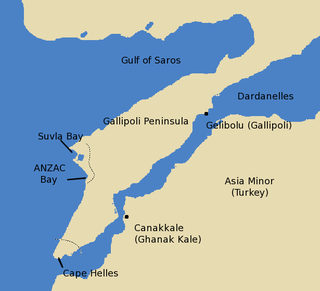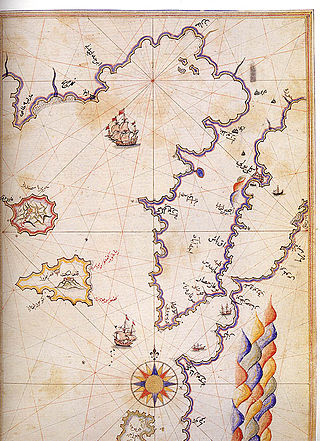Loading AI tools
Large bay/gulf in western Turkey From Wikipedia, the free encyclopedia
Gulf of Saros or Saros Bay (Turkish: Saros Körfezi; Greek: κόλπος Ξηρού, romanized: kólpos Xiroú) is a gulf north of the Dardanelles, Turkey. Ancient Greeks called it the Gulf of Melas (Ancient Greek: Μέλανας κόλπος, romanized: Mélanas kólpos).[1][2]


The bay is 75 km (47 mi) long and 35 km (22 mi) wide. Far from industrialized areas and thanks to underwater currents, it is a popular summer recreation resort with sandy strands and crystal-clear sea. Scuba diving, windsurfing and fishing are the most practiced water sports here.
Settlements around the bay are: Gökçetepe, Mecidiye, Erikli, Danişment, Yayla, Karaincirli, Vakıf, Büyükevren, Sultaniçe, Gülçavuş and Enez, all in Edirne Province. The islands of Gökçeada (Imbros) lie outside Saros Bay and Samothrace in the Aegean Sea, Greece, is in short distance.
The North Anatolian Fault Zone, the most prominent active fault in Turkey and the source of numerous large earthquakes throughout history, passes through the Gulf of İzmit and traverses the Marmara Sea reaching to the Saros Bay to the southeast.[3]
In relative proximity, although outside of the gulf, on the Southern shore of the Dardanelles, across from Gallipoli, is the location of legendary Troy.
The bay served for a long time as a place for NATO's amphibious exercises. In the fall of 1992, the Turkish destroyer Muavenet was hit by two Sea Sparrow missiles fired by the U.S. aircraft carrier USS Saratoga during the NATO exercise "Display Determination" held in the bay. The incident cost the lives of five Turkish officers, while 22 others aboard were injured seriously.[4]
Seamless Wikipedia browsing. On steroids.
Every time you click a link to Wikipedia, Wiktionary or Wikiquote in your browser's search results, it will show the modern Wikiwand interface.
Wikiwand extension is a five stars, simple, with minimum permission required to keep your browsing private, safe and transparent.